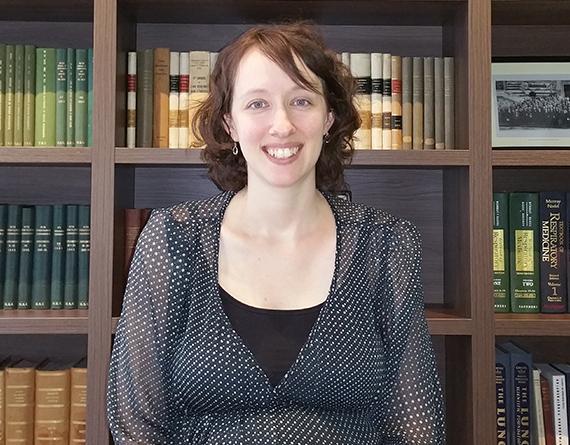
Since 2009, Claire Verhaeghe has been at the centre of building a supportive and efficient programme of services for The Union’s federation of members from 156 countries. She has overseen the transition to a more sophisticated use of technology and increased the opportunities for communication and collaboration between The Union Institute and its global membership network.
Initially, Verhaeghe was hired to serve as the focal point for the four scientific sections – TB, HIV, Adult and Child Lung Health and Tobacco Control. The Cambridge history graduate had already worked in several administrative positions supporting travel and education businesses, so she jumped in to formalise the procedures and processes that make it possible for the far-flung members of the sections to work together effectively.
“When I arrived, many parts of the election process for section officers were still handled manually,” she recalls. This entailed a huge amount of work – and invariably meant that it was hard to attract candidates and voter turnout was not high. She coordinated the development of an online system for managing elections, as well as a clear election policy and as a result, “the sections now have a structured election system and timeline in place, and it is much easier for members to participate and make their voices heard.”
The section’s 16 working groups also run more smoothly now and are making substantive contributions ranging from a best practice guide to TB nursing published in several languages and a well-cited report on TB in prisons to participating in the Global Laboratory Initiative and conducting research on smoking cessation.
To support these scientific activities, for which The Union has been widely known since the 1950s, Verhaeghe collaborated with other Union departments to launch Union Services, a central website where people can join or renew their membership and access members-only resources, as well as enroll in courses and register for conferences. A recent long dreamed of feature of the site is an online Union Member Directory, which has quickly proved very popular with close to 1,000 members, according to Verhaeghe.
While the new directory provides a means of international networking for members who may not have opportunities to travel, the new Student Membership programme is reaching out to younger people seeking to build valuable links with colleagues and mentors.
At the 2015 World Conference in Barcelona, Verhaeghe and her team hosted the first Student Networking Forum on the Friday evening. The event, which offered “happy hour” refreshments, also provided an opportunity for young delegates to meet Union experts in an informal setting. This very well-attended event will be held again in this year at the World Conference in Cape Town.
“Another big shift is that our membership team is global now,” says Verhaeghe, “and I think that makes a difference. When I first came, it was more head office based.” Her colleagues in the membership department are Rajni Khan in New Delhi, who manages the database, while Tanya Uy in The Philippines manages member communications.
With members affiliated by region as well as by scientific section, the global focus has proved essential to strengthening links between members and The Union’s 12 region and country offices. “The goal is to show that we are ‘on the ground’ with them in their regions.”
To highlight this connection, Verhaeghe instituted the development of regional reports summarising the achievements of both members and the Institute that are now sent with the Annual Report each year. And she has worked with region officers and The Union President to recast the Interregional meeting at the World Conference as a forum focused on a cross-cutting theme that affects them all. In addition, the membership team collaborates with the conference team to support each region’s conference as needed.
Verhaeghe also works closely with the constituent and organisational members and helped launch an associate organisational membership category designed to bring smaller organisations and civil society groups from low-income countries into the Union network.
With the Board of Directors made up almost entirely of members elected by the membership, Verhaeghe is a key player in the smooth running of this top level of Union administration as well.
Fortunately Verhaeghe is skillful at keeping track of the myriad of details about thousands of members – and the big picture at the same time.
“Members are the heart of The Union and have been since its founding in 1920. Everything that we have achieved over the past 95 years is an outgrowth of their expertise and commitment to lung health, so it’s always a privilege and pleasure to work for them and with them.”
